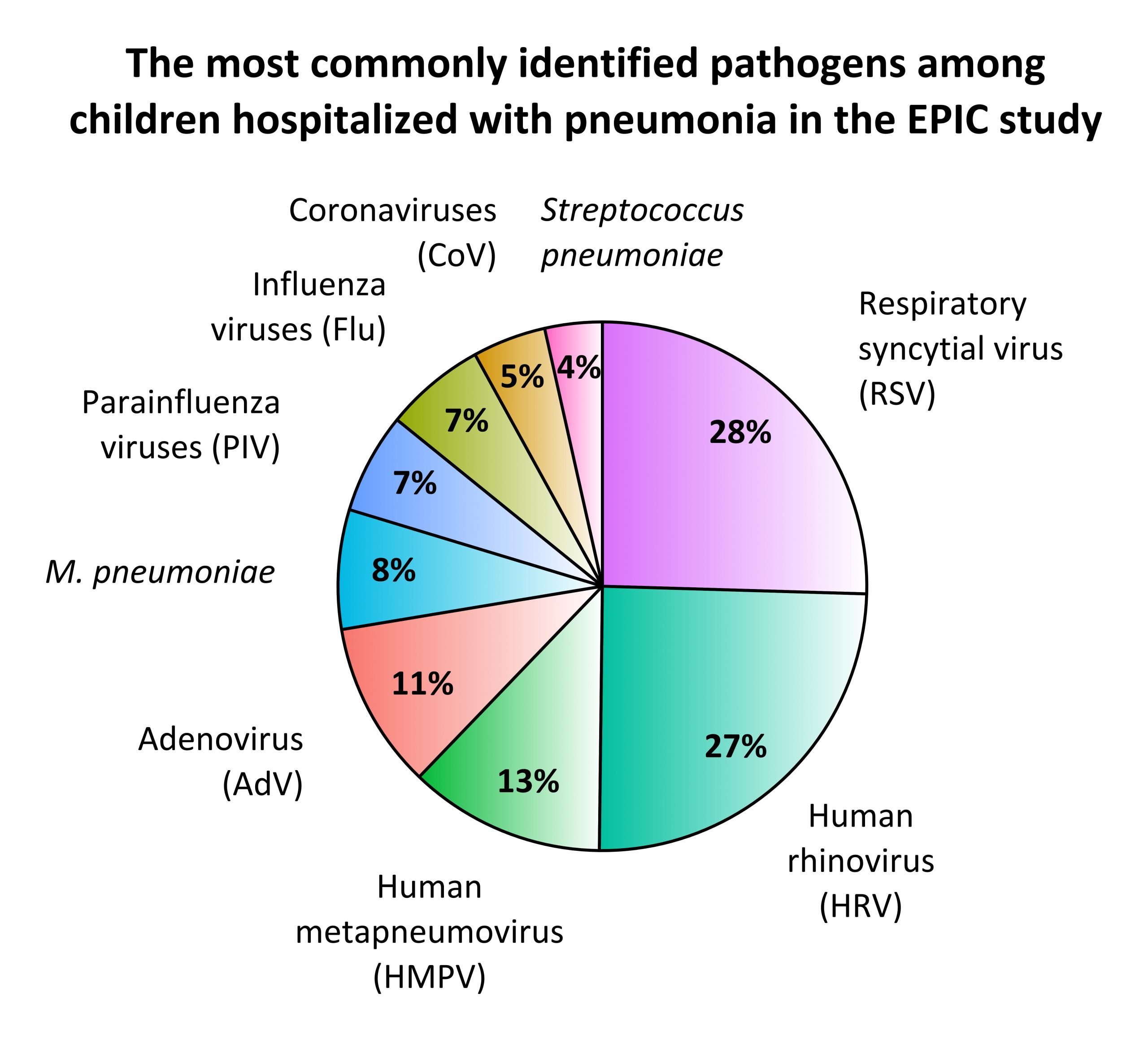
With the chill of winter comes a spike in community-acquired pneumonia (CAP), which spreads more easily as people retreat indoors and come into close contact. The lung infection triggers persistent coughing, chest pain, fever, and difficulty breathing, and is particularly hard on the very young and the very old. In fact, pneumonia is the leading cause of hospitalization among U.S. children, with estimated medical costs of $1 billion annually.
To investigate the specific causes and prevalence of childhood CAP, the Centers for Disease Control and Prevention (CDC) led the Etiology of Pneumonia in the Community (EPIC) study in collaboration with institutions including University of Utah Health Sciences. They report that among children diagnosed with pneumonia, viral infections were much more common than bacterial infections (73 vs. 15 percent), and respiratory syncytial virus (RSV) was the most commonly detected pathogen. The results, which could inform improved strategies for prevention and treatment, were published in The New England Journal of Medicine.
